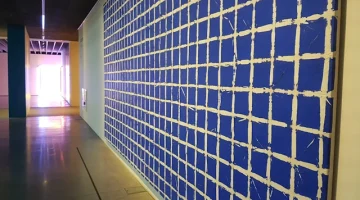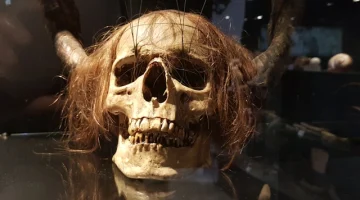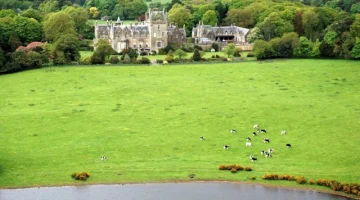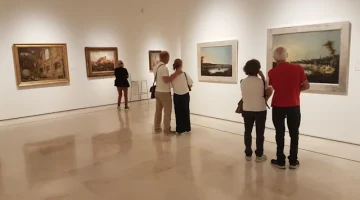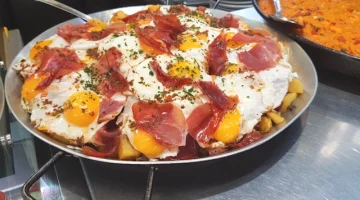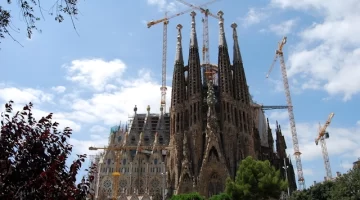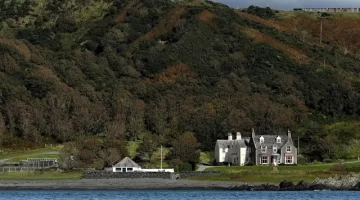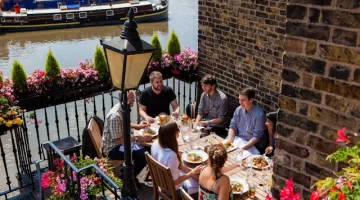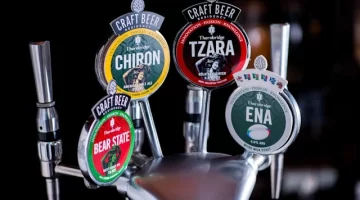The Winegeese of Bordeaux
The Travel Pages describes the Winegeese of Bordeaux, and visits some of the vineyards near Bordeaux.

Why, you might wonder, is there an International Museum of Wine in Kinsale in Ireland, not generally considered one of the world’s great winemaking nations?
It is, admittedly, in the county named Cork, and there are a few wineries in the area, but you could fit all the grapevines in Ireland onto little more than a couple of rugby pitches. Ireland does, however, have a long involvement in the wine trade, for it was the Irish who helped to make the Bordeaux wine trade what it is today. Bordeaux is the second-largest grape-growing region in the world, according to Jancis Robinson. Only Languedoc in southern France is bigger, and Bordeaux produces 800 million bottles of wine every year. And it’s all due to the Winegeese.
Ireland, like England, had always been a great wine and brandy importing country. We couldn’t grow it but we certainly liked to drink it. The sherry and champagne industries thrived on their British and Irish exports. The Irish have been drinking Bordeaux for as long as they’ve been drinking Guinness, but it wasn’t all one-way traffic. The Winegeese flew south from Ireland, and a lot of them landed in Bordeaux.

Before the Winegeese, though, there were the rather better known Wild Geese. These were the Irish migrants of the 17th and 18th centuries, migrating from their home land for all kinds of reasons. Many well-to-do Irish left in the Flight of the Earls after the Battle of Kinsale in 1601 when English forces defeated Hugh Roe O’Donnell and Hugh O’Neill. Many left because of the increasing anti-Catholic laws. Others were simply economic migrants, seeking a better life elsewhere.
And out of these came the Winegeese. These were specifically the families who left and then got involved in the wine trade in the countries they settled in, like Germany, Italy, Spain and France. The official start of the Winegeese migration was 1691, the year after the Battle of the Boyne, when Irish Catholics thought it was time to leave, if they knew what was good for them. Almost 25,000 of them left for France alone in that first year. In Bordeaux in particular the Winegeese settled, and many made new lives for themselves in the wine business.

A man from Skibereen, Abraham Lawton, became the most important wine-broker in Bordeaux, and hence the most important man in the city. A Fermanagh man, Thomas Barton, was soon the leading wine shipper in Bordeaux, and Nathaniel Johnston from Armagh had cellars that held six million bottles.
In Bordeaux today there are said to be 14 chateaux, ten streets and one public monument which all bear Irish names. One of the city’s most famous monuments, Le Grosse-Cloche, commemorates the grandly-named Marie Edme Patrice Maurice de Mac-Mahon, who became the First President of the Third French Republic. Even President de Gaulle’s grandmother was named McCartan, which could explain something about his attitude towards the English.

The Bordeaux wine trade happened around the quai des Chartrons and the Chartrons district, just north of the city centre. This is where the wine merchants had their mansions, many with cellars because the wine would be stored here for shipping out from the nearby quai. Today some of the mansions have been turned into hotels, and the antique trade has taken over from the wine trade in the streets of Chartrons.
The wine business now is outside the city, in the vineyards that spread out in every direction, containing some of the most famous chateaux in the world – Margaux, St-Emilion, Mouton-Rothschild, Chateau d’Yquem, Pomerol and Chateau Smith Haut-Lafitte (Smith was a Scotsman, by the way.) The vines carpet the landscape in green, which must have reminded the Wildgeese of their homeland.

These days, touring the vineyards is big business too, and coach tours leave the Bordeaux Tourist Office every day to take visitors round some of Bordeaux’s famous wine regions, like Medoc, Graves and Sauternes. It’s a good way to enjoy the wineries, as you don’t have to drive and you also get to see some of the vineyards which aren’t normally open to the public but will accept private groups.
It’s also a chance to sample and buy wines that you would never otherwise see, at vineyards like Chateau Smith Haut-Lafitte, which dates back to the 14th century and whose best vintages sell out within hours of being put on the market. On a wine tour you can taste these quality wines, and buy from the supplies that the owners keep back to sell at the door.

Our visit to Bordeaux just happened to coincide with the huge bi-annual Bordeaux Fête Le Vin. For four days the places des Quinconces, the largest square in Europe, is packed with stalls, and people wandering between them with glasses in their hands and happy looks on their faces.
I had a happy look on my own face after joining a tour of Bordeaux vineyards. At 10am the coach driver started the engine, and by 10.20 we were sampling wine at Ginestet.

They’ve been making wine here since 1897, and must be doing something right as they’re even able to sell French wine in Texas. It’s one of their big markets. If you buy own-brand supermarket Bordeaux, there’s a fair chance that it has been made by Ginestet, who sell 30 million bottles a year, one-third of them with supermarket labels on. Their bottling plant handles 15,000 bottles an hour, all computer-controlled. It’s full-on 21st-century wine-making.

By noon we’re at Chateau Montlau, and stepping back in time. Parts of the chateau were built with stones from a Roman road, a Cedar of Lebanon in the courtyard is 350 years old, and the wine-making business dates back to 1472. When the owner, Armand Schuster de Ballwil, shows us into the old barn where he makes his wine, it looks like they could well be the original buildings.

‘Other vineyards are modernising,’ he says, ‘but I am trying to take the winery back to the way it was in the 19th century. Stainless steel doesn’t make wine: grapes make wine.’

As we sit and have lunch on Armand’s terrace, drinking copious amounts of his wine while looking across the river to the neighbouring estates of St-Emilion, Pomerol and Petrus, I start to have the usual fantasies of giving it all up and buying a French vineyard. The Winegeese certainly had the right idea.
BEST BORDEAUX GUIDE
Here’s our pick of the travel guides to Bordeaux, the pocket-sized guide from Lonely Planet. It’s got 91% 4-star and 5-star reviews on Amazon. Here’s what one reviewer said: ‘Just came back from Bordeaux and used this guide every day. it’s very good and despite it’s size, it is very informative and I highly recommend it.’
Click on the cover to read more on Amazon.

